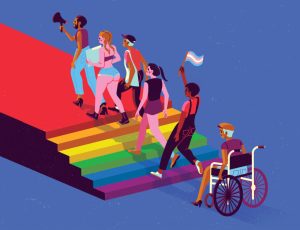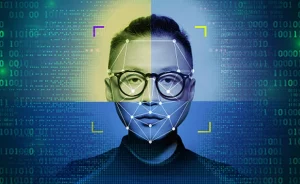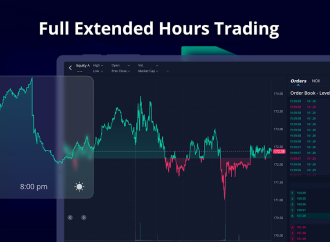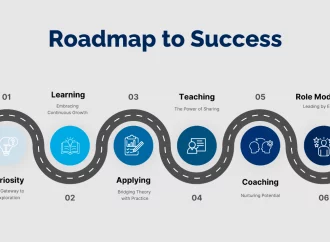Introduction: Imagine a classroom buzzing with technology. Students navigate interactive simulations, collaborate on digital projects, and access a world of information at their fingertips. This is the promise of education technology (EdTech) – a gateway to personalized learning and enhanced engagement. Yet, amidst the digital buzz, a whisper of concern arises: is this newfound tech
Introduction:
Imagine a classroom buzzing with technology. Students navigate interactive simulations, collaborate on digital projects, and access a world of information at their fingertips. This is the promise of education technology (EdTech) – a gateway to personalized learning and enhanced engagement. Yet, amidst the digital buzz, a whisper of concern arises: is this newfound tech friend turning foe for some students? The reality paints a complex picture, where the potential for empowerment meets the chilling possibility of exclusion for vulnerable groups, particularly students with disabilities and those who identify as LGBTQ+.
Beyond Screens and Education technology

Image by:eyond-screen-unleashing-magic
EdTech offers undeniable benefits, boosting accessibility for some, providing differentiated learning, and fostering collaboration. However, Dr. Amelia Johnson, renowned researcher and champion of inclusive learning environments, warns in her latest report, “Navigating the Digital Divide: Ensuring Technology Empowers All Students,” that “the allure of tech shouldn’t blind us to the potential for harm.” She emphasizes the human impact, reminding us that technology is a tool, and its value hinges on its implementation.
Disability & LGBTQ+Education technology

Image by:politico.eu
For students with disabilities, EdTech can present unforeseen barriers. Inaccessible platforms, biased algorithms, and a lack of specialized tools can limit participation, hinder learning, and exacerbate existing inequalities. Imagine a visually impaired student struggling to navigate a text-heavy interface, or a student with dyslexia unable to utilize voice-to-text software due to compatibility issues. Such limitations amplify the digital divide, leaving these students further behind.
Similarly, LGBTQ+ students face unique challenges in the EdTech landscape. Content filtering, often implemented with good intentions, can inadvertently silence their identities and erase valuable representation. Biased data collection practices can lead to inaccurate assessments and discriminatory experiences. The fear of surveillance and lack of safe digital spaces can further marginalize these students, stifling their voices and hindering their full participation in the learning process.
Empowerment to Education technology
Dr. Johnson stresses that addressing these concerns requires a proactive approach. Here are some key areas for action:
Accessibility and Education technology
Technology platforms should be universally designed, incorporating features like screen readers, text-to-speech options, and alternative input methods. Regular audits and user testing are crucial to ensure inclusivity for diverse abilities.
Algorithmic Bias and Education technology

Image by:aha.org
Data sets used to train AI algorithms must be diverse and representative, mitigating the risk of perpetuating existing biases. Transparency in algorithm development and independent oversight are essential for ensuring fairness and accountability.
Inclusive Content:
Curriculum and learning materials integrated with EdTech platforms should be inclusive and representative of diverse identities and experiences. LGBTQ+ narratives and perspectives should be actively incorporated, creating a safe and validating learning environment for all.
Data Privacy:
Clear data privacy policies are paramount, explaining how student data is collected, used, and protected. Student involvement in shaping data governance policies empowers them and fosters trust in the digital learning environment.
Teacher Training:
Educators need comprehensive training on using EdTech inclusively, incorporating culturally responsive pedagogy, and identifying and mitigating potential biases. This empowers them to create truly equitable learning experiences for all students.
Building Bridges, Not Walls:

Image by:the-dots.com
Beyond these core areas, practical solutions can bridge the gap and pave the way for inclusive EdTech:
- Student Voice: Empowering students with disabilities and LGBTQ+ students to have a voice in shaping tech policies and providing feedback on platforms fosters inclusivity and identifies potential shortcomings.
- Collaboration: Partnerships between educators, researchers, technology developers, and community stakeholders are crucial for developing and implementing equitable EdTech solutions.
- Critical Thinking Skills: Equipping students with critical thinking skills allows them to navigate online information responsibly, identify biases, and advocate for their rights in the digital world.
Charting a Future of Equitable Learning:
The promise of EdTech should extend to all students, fostering empowerment and unlocking their full potential. Achieving this vision requires a collective effort. Parents, educators, policymakers, and technology developers must collaborate to create an inclusive digital learning landscape where every student can thrive. By addressing rights concerns, implementing practical solutions, and prioritizing collaboration, we can ensure that technology truly acts as a friend, not a foe, for all students.
Informative Table:
| Vulnerable Group | Rights Concerns in EdTech | Potential Consequences |
|---|---|---|
| Students with Disabilities | Accessibility barriers, algorithmic bias, lack of specialized tools | Limited participation, hindered learning, exclusion from opportunities. |
| LGBTQ+ Students | Content filtering, biased data collection, lack of representation | Silencing of identities, inaccurate assessments, fear and discomfort. |




















